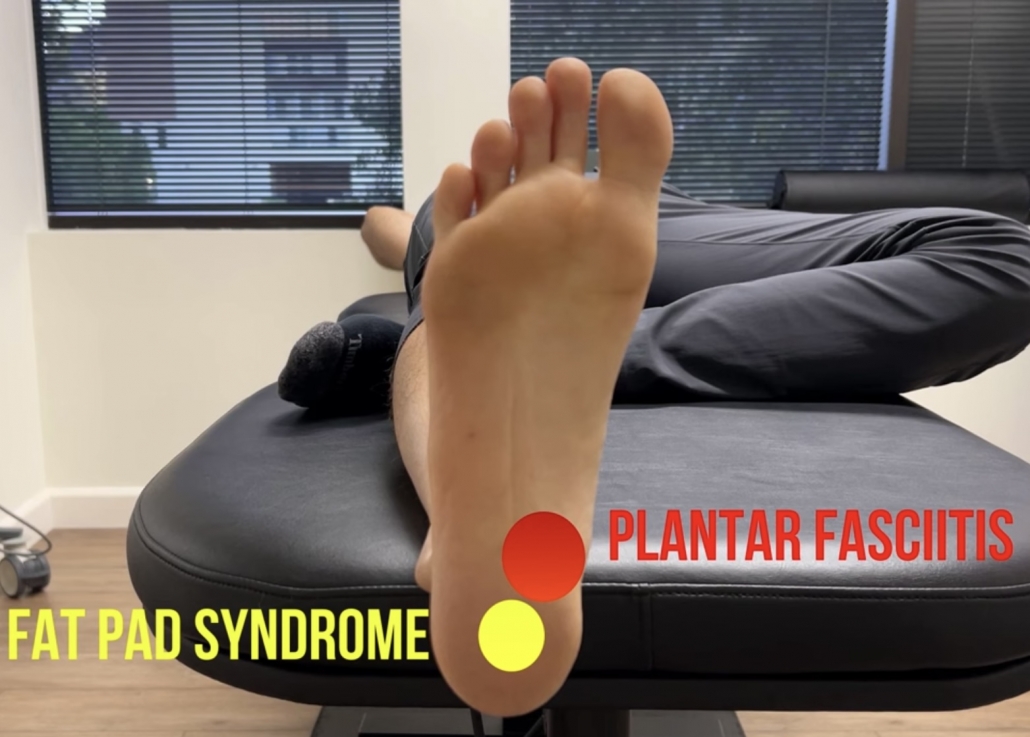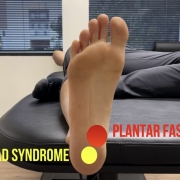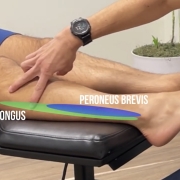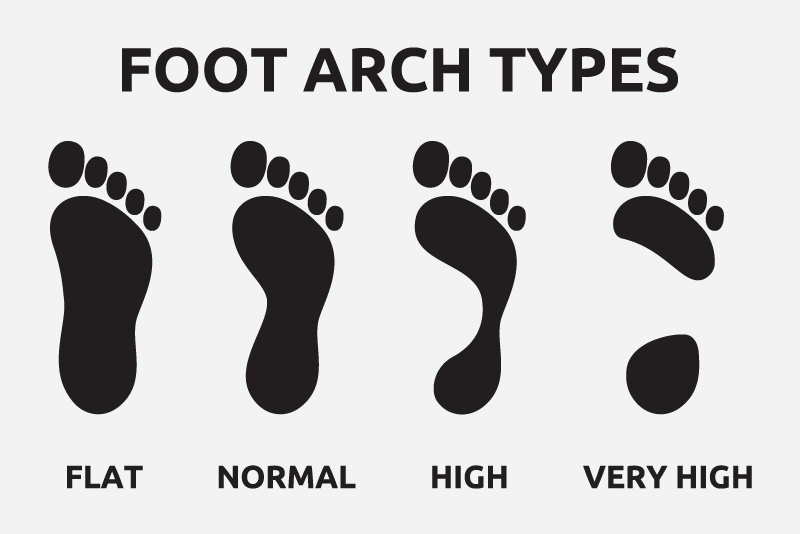Types of Heel Pain
Many patients ask themselves, “Do I have plantar fasciitis?”. Many patients assume they have plantar fasciitis as it is a fairly well known term but there are many types of heel pain. The types of heel pain shown in the video below are the most common types of heel pain. Based on the location and the type of pain you are experiencing, it is easy to differentiate between let’s say plantar fasciitis or achilles tendonitis, plantar fasciitis or fat pad syndrome, etc. Once you have a proper diagnosis, then you can go about treatment for heel pain successfully.
What is Fat Pad Syndrome?
The most common condition we see that tricks patients into thinking they have plantar fasciitis is fat pad syndrome. Some patients can have both! There are a few key differences in the history and exam to differentiate between the two. Patients with fat pad syndrome have pain consistently throughout the day, worse barefoot, and stretching does not help. Plantar fasciitis is characterized by pain that is worse in the morning, but improves to a degree as you walk around. Stretching and rolling usually help temporarily alleviate symptoms. Fat pad syndrome needs to be protected with taping to support the fat pad, wearing heel cups in your shoes, and wearing cushioned shoes throughout the day. Once the heel is protected, inflammation will go away and the symptoms improve.

Is a Plantar Heel Spur the Cause of My Pain?
One question we often get asked is if a patient has plantar fasciitis or heel spur. The reality is, is that people may have heel spurs and never have pain in the heel. Or patients may have plantar fasciitis symptoms and find a bone spur after having an x-ray. Patients may experience plantar fasciitis pain with a heel spur or they may not.
A heel spur is only present if there has been enough tension or pulling from the plantar fascia. This constant tension results in the heel bone becoming elongated at the plantar fascia attachment site. This usually occurs from long standing tension in the plantar fascia from high arches, biomechanical stress, hallux limitus, etc. Treatment is same if a patient has plantar fasciitis or heel spur.
Achilles Spurs and Haglund’s Deformity
Heel spurs can also be seen on the back side of the heel where the Achilles tendon attaches. Achilles tendonitis can cause pain in the back of the heel. This type or Achilles tendinopathy is termed insertional Achilles tendonitis as the pain is at the site of where the tendon inserts into the heel bone. Similar to the plantar heel spur, some patients may have an Achilles heel spur, others may not. Treatment of insertional Achilles tendinitis, with or without a spur is the same.
A more obvious deformity called a Haglund’s deformity, is a overgrowth on the backside of the heel where the Achilles attaches. The tendon becomes inflamed when this deformity rubs on the soft tissues, especially in shoes. We most comonly see this in patients who have had chronic Achilles tendinopathy or have other structural causes of this deformity such as high arches, hallus limitus, and or rear foot varus
Less Common Types of Heel Pain
L
Less common types of heel pain but still seen in the clinic are peroneal tendonitis and posterior tibialis tendonitis. Peroneal tendonitis can affect the outer portion of the heel while posterior tibialis tendonitis can affect the inner heel area. Usually the pain is at the sides of the heels but we have seen some cases where pain is on the bottom/side of the heel. Again patients are quick to say they have plantar fasciitis, but with a pinpoint exam, we can rule in these other tendons as being the pain generators, not the plantar fascia.
The heel is a small area and can be relatively simple to diagnose the cause(s) of heel pain. However, many people end up having different conditions than what they thought they had. This ultimately delays the recovery process by not receiving the correct treatment plan initially. Schedule with one of our sports chiropractors today to get you on the correct path to recovery. Peak Form Health Center is located in Mission Valley, San Diego.





